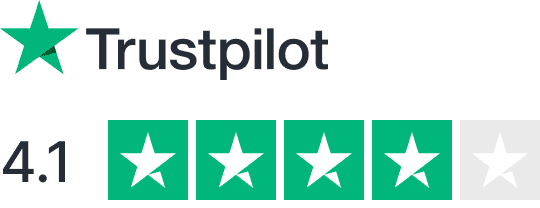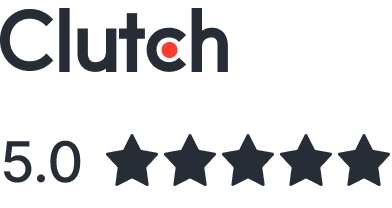- What is FTE Staff Augmentation? Hiring external professionals who work like full-time employees but with flexible arrangements. FTE measures work hours, e.g., 40 hours/week = 1 FTE.
- Why Use It?
- Cost Savings: Hiring from regions like Latin America can save 25–50% on costs.
- Access to Talent: Skilled professionals, especially in tech, are available at lower rates (e.g., $31–$50/hour).
- Scalability: Quickly expand or reduce team size based on project needs.
- Key Benefits:
- Lower hiring expenses (no benefits, training, or infrastructure costs).
- Improved productivity and reduced errors, as seen in real-world examples like clinics cutting billing errors by 20%.
- Seamless integration with existing teams.
- Challenges to Address:
- Legal compliance in regions like LATAM (e.g., data protection laws).
- Retention strategies to keep top talent engaged.
- Effective communication across time zones and cultures.
- How to Get Started:
- Conduct a skills gap analysis to identify needs.
- Choose a staffing provider with a strong talent network and low attrition rates.
- Focus on onboarding and team integration for smooth collaboration.
Main Advantages of FTE Staff Augmentation
Cutting Hiring Costs
FTE staff augmentation offers a straightforward way to reduce hiring expenses, particularly when sourcing talent from Latin America. Compared to hiring full-time employees in the United States, businesses can realize significant savings, especially for specialized technical roles.| Position | USA Cost | LATAM Cost | Savings |
|---|---|---|---|
| AI/ML Engineer | $187,000 | $78,700 | 58% |
| Cloud Engineer | $241,700 | $83,000 | 66% |
| Java Developer | $163,700 | $80,000 | 51% |
| Python Developer | $179,300 | $78,200 | 56% |
Accessing Skilled Talent
Lower costs don’t mean compromising on expertise. Latin America boasts a talent pool of over 1 million developers skilled in emerging technologies. Senior developers in the region typically charge between $31 and $50 per hour, a stark contrast to the $80 to $150 per hour rates in the U.S., all while meeting high-quality standards.“Finding skilled talent with low rates in Latin America is a no-brainer.” – Boris Shiklo, CTO at ScienceSoft
Scaling Teams Quickly
FTE staff augmentation also simplifies scaling your team. Whether you need to expand or downsize based on project demands, this approach allows for flexibility without compromising on performance. Time zone alignment, fast talent matching, and flexible contracts make team adjustments seamless. The growing outsourcing market in Latin America supports these scaling advantages. By 2029, the region’s outsourcing market is expected to surpass $27 billion, with the software market alone projected to hit $16.3 billion by 2025. This robust infrastructure ensures that scaling your team is both efficient and reliable.Setting Up FTE Staff Augmentation
Skills Gap Analysis
Start by conducting a detailed skills gap analysis. This involves assessing your current workforce’s abilities and aligning them with future project needs. Use surveys and leader interviews to gather insights, and build a skills matrix to visualize how existing competencies stack up against project demands. Research shows that work performance improves by 25% when team members clearly understand their roles and responsibilities. Break this process into three key areas: Current Skills Assessment- Review job descriptions and performance reviews.
- Document technical skills and experience levels.
- Pinpoint productivity bottlenecks that may hinder progress.
- Evaluate the requirements of upcoming projects.
- Factor in emerging technologies and shifting market trends.
- Align skill needs with your business growth objectives.
- Compare current capabilities with projected requirements.
- Identify roles that need either permanent or temporary staffing.
- Prioritize addressing critical skill shortages to keep projects on track.
Selecting a Staffing Provider
Choosing the right staffing partner is essential. Look for providers with a proven track record and an attrition rate of less than 15%.Provider Evaluation Criteria
When evaluating potential staffing providers, focus on the following criteria to ensure success:| Criteria | Essential Requirements | Impact on Success |
|---|---|---|
| Talent Network | 1,000+ vetted developers | Faster matching times |
| Technical Screening | Multi-stage assessment process | Higher quality candidates |
| Support Services | HR, payroll, and compliance | Reduced administrative burden |
| Response Time | Under 72 hours for initial matches | Quicker team scaling |
| Cultural Alignment | Shared values and communication style | Better team integration |
Team Integration Steps
A strong onboarding process can make all the difference. Statistics show that 91% of well-oriented new hires feel connected to their teams, compared to just 29% of those with poor onboarding experiences. Technical Setup- Configure necessary tools and platforms.
- Establish secure communication channels.
- Set up version control and documentation systems.
- Standardize workflows for consistency.
- Define clear communication protocols to avoid misunderstandings.
- Organize virtual team-building activities to foster collaboration.
- Introduce mentorship programs to support new hires.
- Promote cross-functional collaboration to enhance team dynamics.
- Monitor performance metrics to ensure alignment with goals.
Common FTE Staffing Challenges
While FTE staff augmentation offers many advantages, it doesn’t come without its hurdles. Let’s break down some of the key challenges – legal, communication, and retention – and explore ways to address them effectively.Legal Requirements
Navigating the legal landscape in LATAM can be tricky, with compliance being non-negotiable. Data Protection and Security Countries like Argentina, Brazil, Mexico, and Chile enforce strict data protection laws. This means companies must implement robust database security measures and encryption protocols to safeguard sensitive information. Tax Incentives LATAM governments offer attractive tax incentives for businesses investing in technology:- Colombia: A 30% tax credit for research and development (R&D) investments.
- Mexico: Immediate tax deductions ranging from 56% to 89% for tech companies investing in fixed assets.
- In Mexico, workers are entitled to 10% of the company’s annual taxable profits.
- In Colombia, employees receive Cesantía interest, calculated at 12% of their unemployment payments.
Remote Team Communication
Legalities aside, effective communication is the backbone of any remote team. Research shows that using digital tools can increase remote team productivity by up to 30%.| Challenge | Impact | Solution |
|---|---|---|
| Time Zone Differences | Delayed responses and scheduling conflicts | Set core overlap hours and rely on asynchronous tools for flexibility. |
| Cultural Barriers | Misunderstandings and communication gaps | Offer cultural training and establish clear communication guidelines. |
| Technology Issues | Reduced productivity | Use reliable communication platforms and have backup systems in place. |
Staff Retention
Keeping top talent engaged and motivated is essential for long-term success. Studies indicate that highly engaged teams drive 21% higher profitability. Engagement Drivers Here’s what matters most to employees:- Company culture: 77% of workers consider it a top priority when evaluating job opportunities.
- Growth opportunities: 94% of employees are more likely to stay when they see room for professional development.
- Recognition: 79% say acknowledgment of their efforts inspires better performance.
“70% of the difference in employee engagement comes from management.” – Gallup pollRetention Strategies Companies that prioritize retention often see measurable results. For example, organizations conducting stay interviews experience 82% lower turnover rates. Work-Life Balance A healthy balance between work and personal life is another critical factor. Companies can focus on:
- Offering flexible schedules.
- Respecting time zone differences.
- Providing mental health resources.
- Encouraging regular time off.
Measuring FTE Staff Success
Evaluating the success of FTE staff augmentation involves keeping an eye on three key areas: cost effectiveness, work output, and team stability.Cost Analysis
To understand the financial benefits of FTE staff augmentation, compare its costs against the savings it generates. Unlike traditional hiring, which comes with hefty expenses for recruitment, benefits, training, and infrastructure, staff augmentation significantly reduces these overheads. By tracking cost-related metrics, you can confirm whether your staffing approach is delivering the expected value. But it’s not just about the money – performance metrics provide a deeper understanding of the value FTE staff bring to the table.Work Output Metrics
To gauge the impact on productivity and outcomes, focus on key performance indicators (KPIs) that align with your business goals:- Sprint Velocity
Measure how quickly your team completes tasks by tracking:
- Story point completion rates
- Release cycle durations
- Time taken to resolve bugs
- Code Quality
Evaluate the quality of your development work through:
- Code review pass rates
- Test coverage percentages
- Reduction in technical debt
- Business Impact
Assess how your team’s work affects the broader business by monitoring:
- Customer satisfaction scores
- Frequency of feature deployments
- System uptime percentages
Team Stability
A stable team is just as important as cost and output. Companies with over 100 FTEs often aim for retention rates between 85% and 95%. Keeping an eye on turnover rates, project delivery timelines, and overall team satisfaction can reveal how well your team is holding up over time. Real-Time Monitoring Tips: To stay ahead, implement these practices:- Track billable hours against project milestones
- Monitor compliance with service level agreements (SLAs)
- Measure response times for resolving critical issues
- Assess how effectively team members collaborate
Next Steps
Ready to make the most of FTE staff augmentation? Here’s how you can set yourself up for success: Start with a Clear Plan Kick things off by performing a skills gap analysis. Identify where your current team needs support and outline the technical expertise required to hit your project milestones. Lay the Groundwork Put together a solid plan that covers key areas like project timelines, communication protocols, security measures, performance goals, and budget limits. This foundation ensures everyone is aligned from the start.Performance Tracking Framework
To keep your project on track, focus on these measurable metrics:| Metric Category | Key Indicators | Target Range |
|---|---|---|
| Cost Efficiency | Cost per FTE | 25–50% savings compared to traditional hiring |
| Team Velocity | Sprint completion rate | 60% faster ramp-up time |
| Business Impact | Project delivery time | 15–20% improvement |
- Set clear performance expectations right from the start.
- Hold regular progress check-ins to ensure alignment.
- Streamline your onboarding process for quick integration.
- Maintain digital documentation to make knowledge sharing seamless.
- Pair new team members with a buddy system to ease their transition.
- Schedule knowledge transfer sessions to share expertise across the team.
- Use collaborative project management tools to keep everyone on the same page.
- Clearly define escalation paths to resolve issues without delays.
FAQs
What are the long-term cost benefits of FTE staff augmentation compared to traditional hiring?
FTE staff augmentation offers a smarter way to manage costs compared to traditional hiring. When you hire in-house, you’re not just paying a salary – you’re also covering benefits, payroll taxes, and insurance. These extras can inflate an employee’s base salary by 25–40%. For instance, a full-time employee with a $150,000 salary could end up costing your business as much as $210,000 annually.
With staff augmentation, you only pay for the skills you need, exactly when you need them. This approach can cut overall workforce expenses by an estimated 20–35%, with potential savings reaching up to 50% in some cases. Beyond cost savings, this model gives you the agility to scale your team quickly to meet project demands, all without the long-term obligations of permanent hires. It’s a practical way to boost efficiency while keeping your financial commitments lean and flexible.
How can businesses ensure effective communication and cultural integration with remote FTE staff from different regions?
To keep communication seamless and ensure smooth integration with remote Full-Time Equivalent (FTE) staff, businesses should adopt a few practical strategies. Start by setting up reliable communication channels. Use tools that support both real-time conversations and asynchronous updates – this is especially helpful for managing different time zones while keeping everyone connected without overwhelming the team.
Equally important is promoting cultural understanding. Offer training sessions or mentorship programs that help team members appreciate and navigate diverse perspectives. Encouraging partnerships between employees from varied backgrounds can spark stronger relationships and foster knowledge exchange. Additionally, regular check-ins and open feedback loops are essential for addressing potential misunderstandings and keeping everyone aligned with the company’s goals.
By focusing on clear communication, valuing cultural differences, and staying consistently engaged, businesses can create a unified and highly effective remote team.
What legal factors should U.S. companies consider when using FTE staff augmentation in Latin America?
When engaging in FTE staff augmentation in Latin America, U.S. companies need to navigate several legal considerations to ensure smooth operations and avoid potential pitfalls.
To start, labor laws differ significantly across countries in the region. These laws govern aspects like minimum wage, working hours, and employee benefits. Properly classifying workers as either employees or independent contractors is crucial to sidestep legal issues that could arise from misclassification.
Next, tax compliance is a non-negotiable requirement. Each country has unique tax regulations, including payroll taxes and, in some cases, VAT obligations. Failing to meet these requirements could result in hefty fines or other penalties.
Equally important are data protection and intellectual property safeguards. Many Latin American nations enforce strict data privacy laws, which means companies must handle personal data with care. At the same time, clear agreements about intellectual property rights in contracts help protect your business assets from potential disputes.
For companies looking to simplify these complexities, partnering with a local Employer of Record (EOR) can be a game-changer. An EOR can handle compliance with labor laws, taxes, and other regulations, freeing you to focus on your business priorities.
















